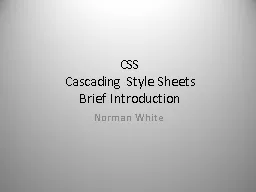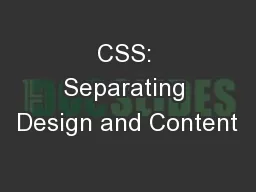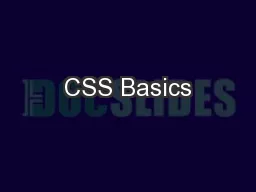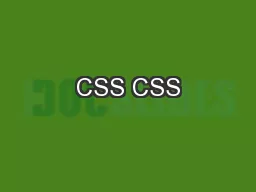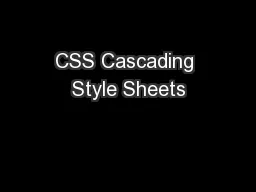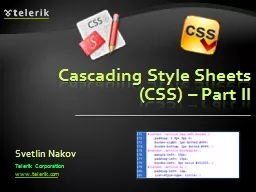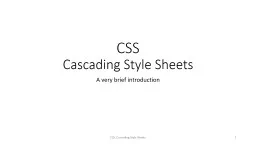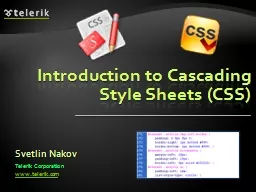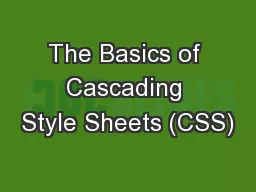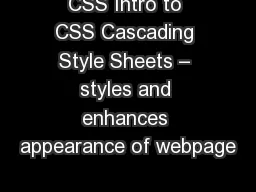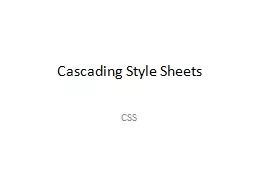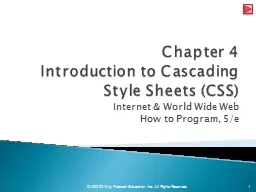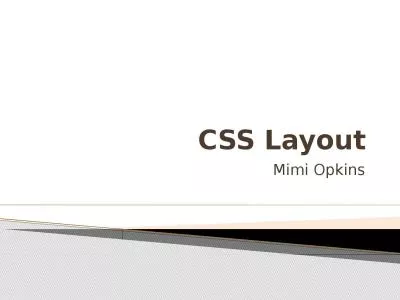PPT-CSS Cascading Style
Author : debby-jeon | Published Date : 2015-10-08
Sheets Brief Introduction Norman White Background HTML was not intended to have tags for formatting a document Intended to define contents headings paragraphs etc
Presentation Embed Code
Download Presentation
Download Presentation The PPT/PDF document "CSS Cascading Style" is the property of its rightful owner. Permission is granted to download and print the materials on this website for personal, non-commercial use only, and to display it on your personal computer provided you do not modify the materials and that you retain all copyright notices contained in the materials. By downloading content from our website, you accept the terms of this agreement.
CSS Cascading Style: Transcript
Download Rules Of Document
"CSS Cascading Style"The content belongs to its owner. You may download and print it for personal use, without modification, and keep all copyright notices. By downloading, you agree to these terms.
Related Documents

